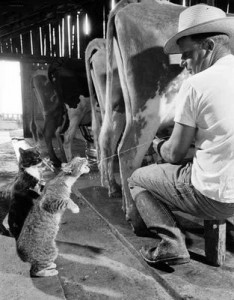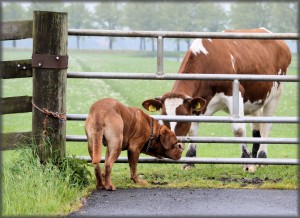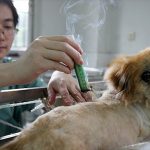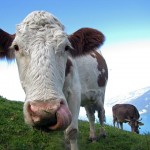Colostrum For Your Pets Health

So, what exactly is colostrum?
Colostrum is the “first milk†produced by mammals in the first 24-48 hours immediately after giving birth. It is full of anti-bodies and growth-factors. Colostrum also contains a large amount of a valuable iron-binding protein called lactoferrin. Actually, you can find lactoferrin in all bodily fluids, such as: the regular milk produced by the mother after giving birth, fluids in the eyes, nose, respiratory tract, intestines, etc. However, colostrum contains seven times the amount of lactoferrin. As a matter of fact, colostrum contains 875 mg per 4 ounces compared to regular breast milk, which only has 125 mg of lactoferrin per 4 ounces.
So, what’s so special about lactoferrin? Well, because of its unique affinity to iron, it helps to regulate the absorption of iron in the intestine and deliver iron to the cells. There are many strains of pathogens that need an iron-rich environment to reproduce. Lactoferrin limits the availability of iron to bacteria in the intestines, allowing only the beneficial bacteria to thrive.
For medicinal purposes sometimes lactoferrin is separated from the colostrum and is used for treating stomach and intestinal ulcers, diarrhea, leaky-gut syndrome, and hepatitis C. It is also used as an antioxidant and to protect against bacterial, fungi, and viral infections. Other uses include stimulating the immune defense system, preventing tissue damage related to aging, promoting healthy intestinal bacteria, preventing cancer. Lactoferrin also seems to be involved with regulation of bone marrow function (myelopoiesis). It also seems to protect against bacterial infection, possibly by preventing the growth of bacteria by depriving them of essential nutrients or by killing bacteria by destroying their cell walls. Therefore, lactoferrin contained in mother’s milk is credited with helping to protect breast-fed infants against bacterial infections.
In industrial agriculture, lactoferrin is used to kill bacteria during meat processing.
What Other Good Stuff Is In Colostrum?
Pasture-fed cows produce colostrum that contain immunoglobulins which are specific to many human (and animals) pathogens, including Escherichia coli, Cryptosporidium parvum, Shigella flexneri, Salmonella, Staphylococcus, and rotavirus (which causes diarrhea in infants). Before there were antibiotics or sulfur drugs, colostrum was the main source of immunoglobulins used to fight infections. And, for thousands of years since the cow was first domesticated, the Ayurvedic physicians and the Rishis of India have been using colostrum for medicinal purposes.
Thanks to the over-use of modern antibiotic drugs there is now an emergence of antibiotic-resistance pathogens. Our only hope now may be to fight infection with the rediscovery of natural remedies.
Douglas A. Wyatt, Founder of the Center for Nutritional Research, strongly encourages anyone suffering with allergies, gastrointestinal ailments, or other autoimmune diseases to consider supplementing with bovine colostrum. Halting and reversing autoimmune diseases depends on healing the lining of the gastrointestinal tract. Colostrum is the only substance that can close the holes in the intestinal lining. “Physicians are increasingly recognizing the importance of the gastrointestinal tract in the development of allergic or autoimmune diseases. Understanding the leaky gut phenomenon not only helps explain how allergies and autoimmune diseases develop but also helps develop safe and effective therapies to bring the body back into balance,” says Wyatt.
I often recommend colostrum for many conditions—from skin problems to gastrointestinal disturbances—that are ailing our cats and dogs these days. Look for colostrum that comes from grass-fed, antibiotic-free, hormone-free cows. It usually comes in powder form, either in capsules, or loose to sprinkle on food. Follow instructions on the label, and give in according to the animals weight.











